Serve chicken to your baby with confidence! Here is everything you need to know about safely serving chicken to baby led weaning babies 6 months and older, including how to cook chicken for babies, how to cut chicken for different stages, and BLW chicken recipe ideas.
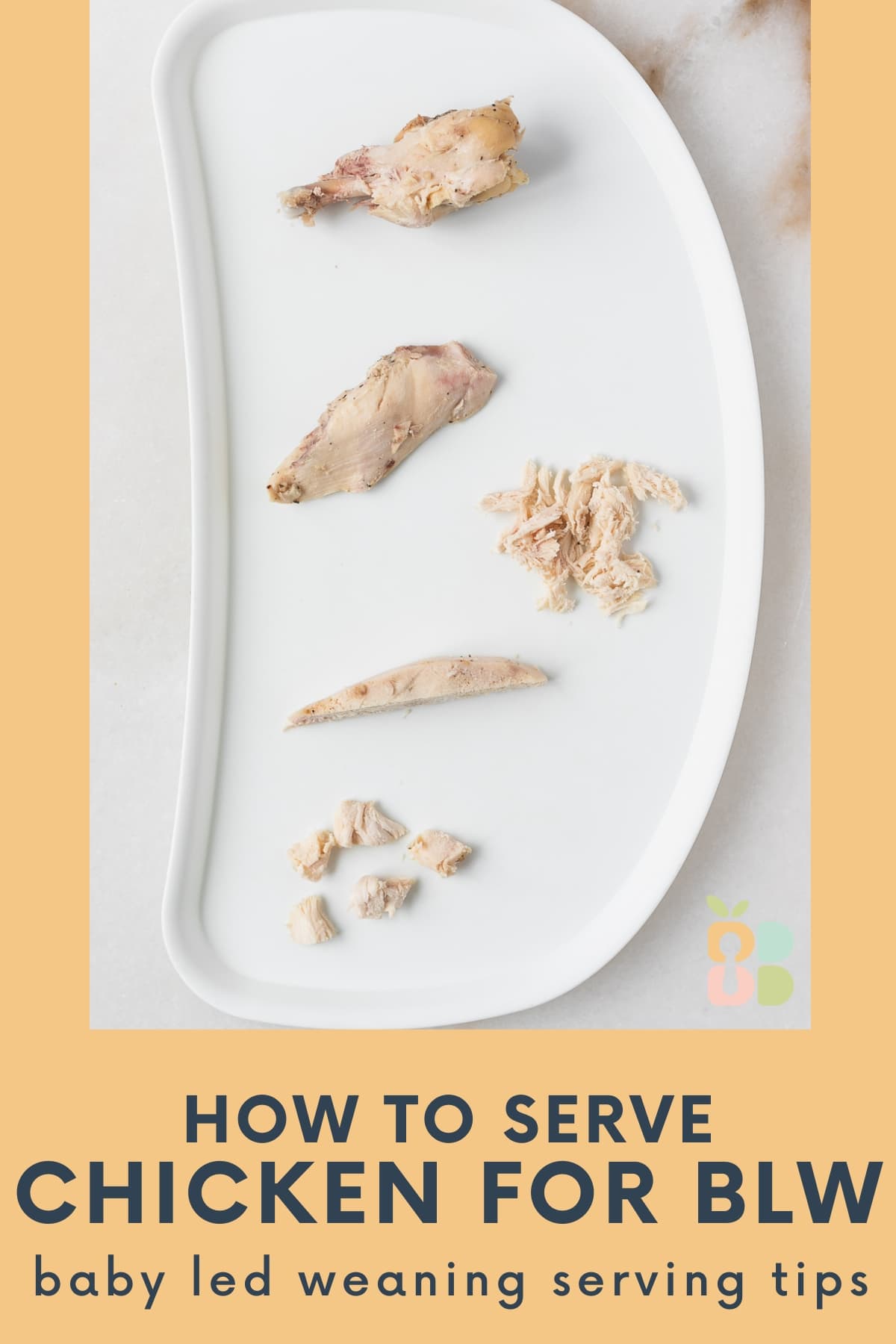
Many first time (and second or third time!) parents are nervous to serve meat and poultry to their babies when they are first starting solids and finger foods for fear of choking. It's understandable since protein foods like chicken don't always have the softest texture. Rest assured, you can serve chicken to your baby - even with no teeth! In fact, I recommend serving animal proteins like chicken often when starting solids to maximize protein, iron, zinc, and other important nutrients during this period of rapid growth. Here is what you need to know about how to safely serve chicken to babies using a baby led weaning approach.
(Be sure to review and observe the proper safety guidelines any time baby eats, and avoid serving the top choking hazards!)
Jump to:

When Can Babies Eat Chicken?
Babies can eat chicken as soon as they are developmentally ready for solids, around 6 months of age. It is actually better to include animal proteins like chicken, beef, and pork often because of their superiority when it comes to iron - baby's iron needs are high during this stage! Since chicken is not a soft, squishy texture all the time, it will take a little precaution for baby led weaning and finger food babies to ensure you're offering it in a safe manner. But don't worry - I'll walk you through it!
Can My Baby Really Eat Chicken Without Teeth?
Yes, really! As long as the chicken is juicy and moist, baby's strong gums can mash it. Of course, it should be prepared properly and served in an appropriate shape (at 6 months, BIGGER is better - more on that below). If the chicken is not soft enough for baby to gum, he will likely just suck the juices out and discard it, which is just fine, too! Meat and chicken may cause gagging at first, but many other foods, even purees, also cause gagging as baby is learning to eat.
Baby Health Benefits
Chicken is a great source of several important nutrients, including1:
- Iron - As mentioned, animal proteins like chicken are the highest of any food in quality, easily absorbed iron, which is critical for baby's growth and development
- Protein - Chicken is loaded with high quality protein, which babies need to grow (and also heal if they become sick).
- B vitamins - B vitamins like B6 and B12 are important for metabolism and a healthy nervous system.
- Zinc - This mineral helps with the immune system and brain function.
- Choline - Choline is not found in many foods, but is very important for brain development and functioning.
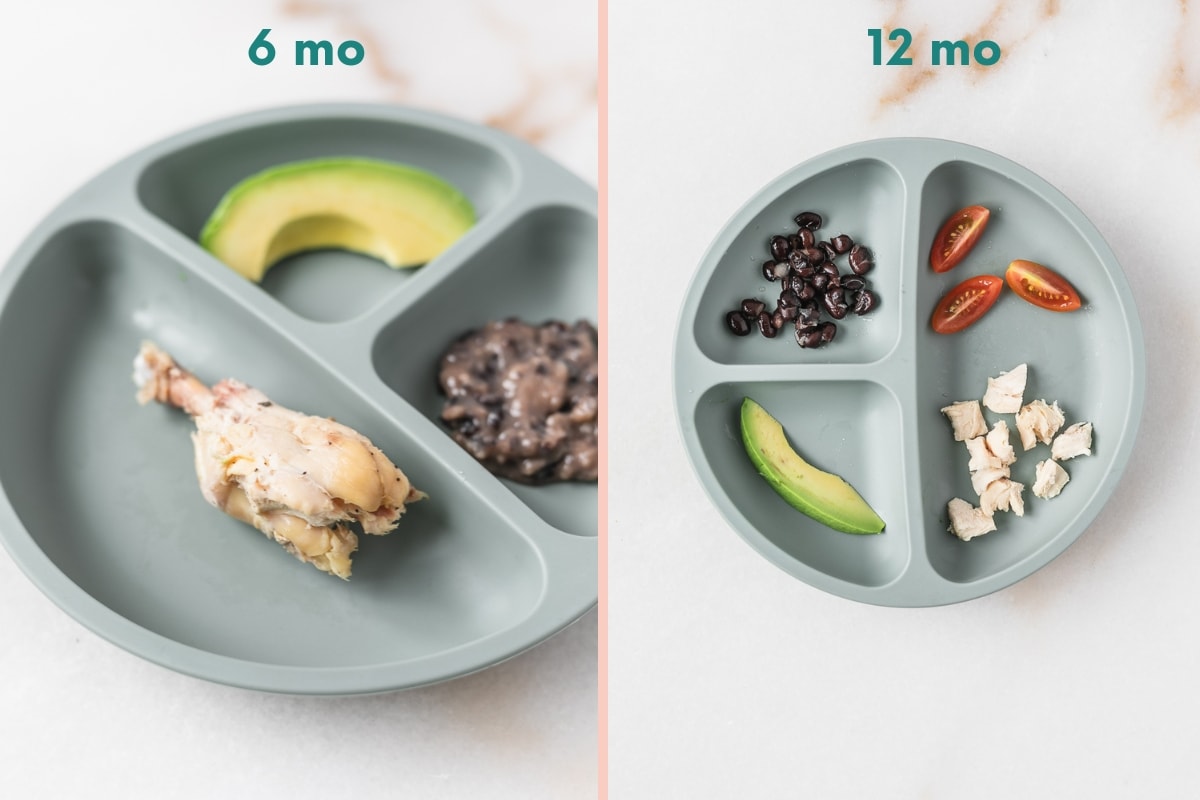
Tips for Cooking Chicken for Baby Led Weaning
Chicken should be thoroughly cooked to an internal temperature of 165°F to avoid the risk of food borne illness caused by bacteria such as Salmonella. But it also should not be over cooked, because you want moist, juicy chicken. I highly recommend investing in a meat thermometer if you don't already have one. It's truly the best kitchen tool!
While you can cook chicken several ways, the best methods for baby led weaning are the ones that will leave the chicken moist and juicy, without too much charring or drying of the edges. Low and slow will consistently give you better results. This is especially important if you're cooking boneless, skinless chicken breasts. If you cook a whole, skin-on chicken or pieces with bones and skin intact, you will have much more leeway in achieving moist chicken and gives you more flexibility with method. Make sure to remove the skin before serving to baby since it can be a choking risk.
Some of my favorite ways to cook chicken for baby led weaning include:
Poaching - Poaching is where the chicken is completely covered with water or broth and simmered gently on the stove until cooked through. This is one of the best methods for boneless, skinless chicken breast.
Baking - If you want to bake boneless, skinless chicken breast, place seasoned chicken in a baking dish and cover tightly with foil and bake at 375°F until done. This should take about 15-20 minutes depending on the thickness of the chicken. Covering the dish is key for keeping moisture in!
Roasting - Roasting is great for bone-in skin-on chicken. The skin keeps the chicken moist during cooking, and the bones make it more flavorful. Roasting is typically done at 425°F until the temperature at the thickest parts of the breast and thigh reach 165°F. (Again, I highly recommend a meat thermometer!)
Boiling/Stewing - Stewing or boiling chicken on very low heat, as you would for soup or stew, is great for making shredded chicken for babies! It works great with whole chickens or pieces, and makes the chicken flavorful and juicy. Simply shred the meat off the bone, discarding the skin, when it's cooked through. You can also stew whole chickens in the slow cooker.
Grilling - Grilling is also best suited for chicken with the skin on, or chicken thighs for babies because they will stay more juicy. Aim for slightly lower heat so that the outside doesn't burn or dry out before the middle gets done.
Once your chicken is cooked, you can cut or shred it into the ideal size and shape for your baby's stage.
Tip: Remove chicken from the refrigerator about 30 minutes before cooking. Very cold chicken will not cook as evenly and will be more likely to dry out.
How To Cut and Serve Chicken for Baby Led Weaning
For younger babies, BIGGER is better! Around 6 months, babies hold object, including food, in their fists and munch on whatever is poking out. In the case of chicken, you want long pieces, or even pieces with built-in 'handles' (like drumsticks) so that baby has something to pull on if he accidentally sticks too much in his mouth, or if he cannot mash it with his gums and just wants to suck the juices out. Once baby develops a pincer grasp (around 9-10 months), you can offer smaller pieces, but still make sure chicken is moist and easily shredded.
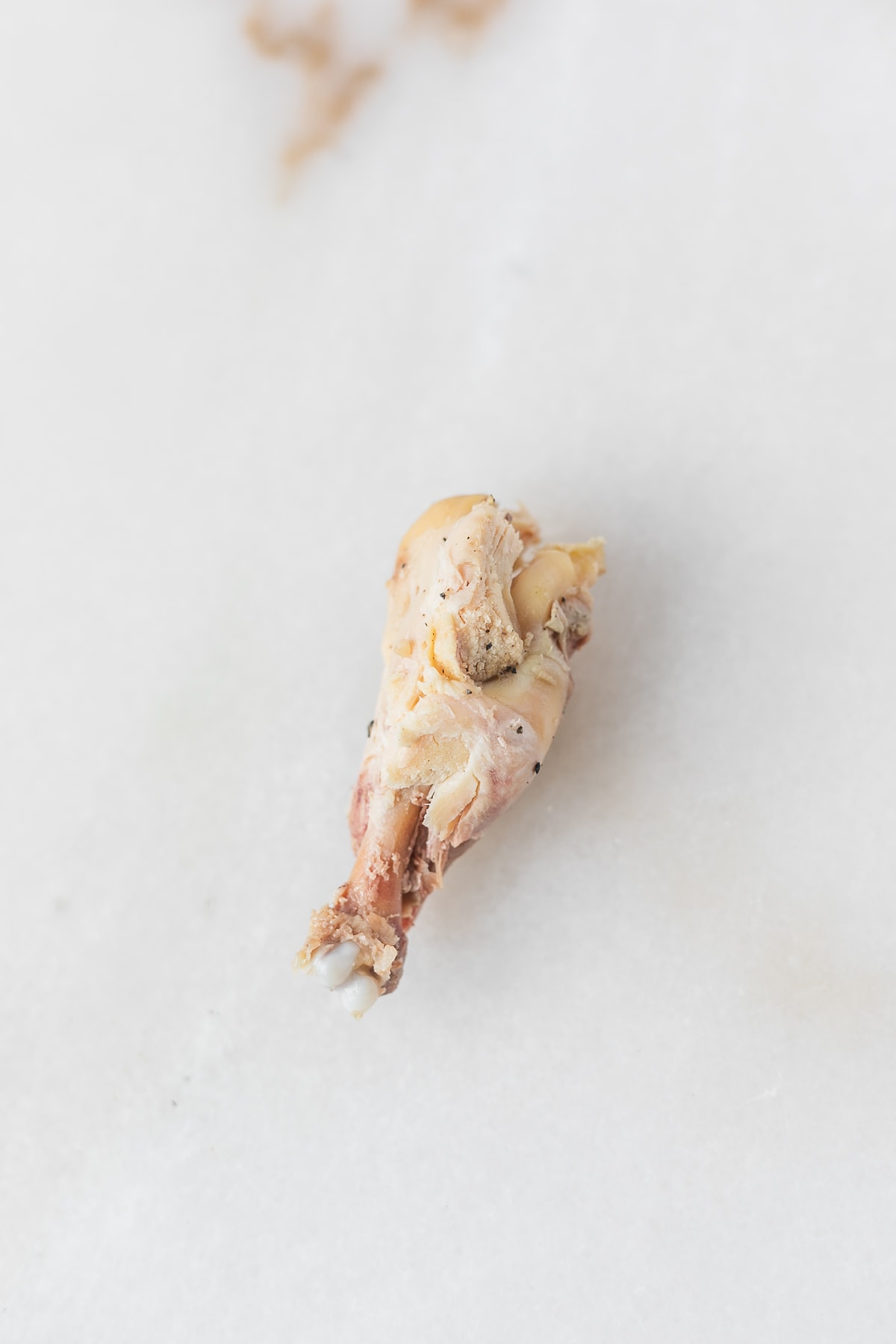
1. Drumstick, skin removed (6+ months)
I'll admit, this was the strangest notion to me at first - giving a young baby a whole drumstick! But as mentioned above, the built-in 'handle' on a chicken leg allows baby to grip it with his first while he gums the meat and poses less of a choking risk because he likely won't be able to get any bite-size pieces off at once. If baby does manage to get a big piece off in his mouth, calmly coach him to spit it out. Never stick you fingers in baby's mouth.
You can offer the true chicken leg, or the portion of the chicken wing that looks like a drumstick. Just be sure that the skin is removed and any pin bones, cartilage or brittle pieces that could easily break off have been removed.
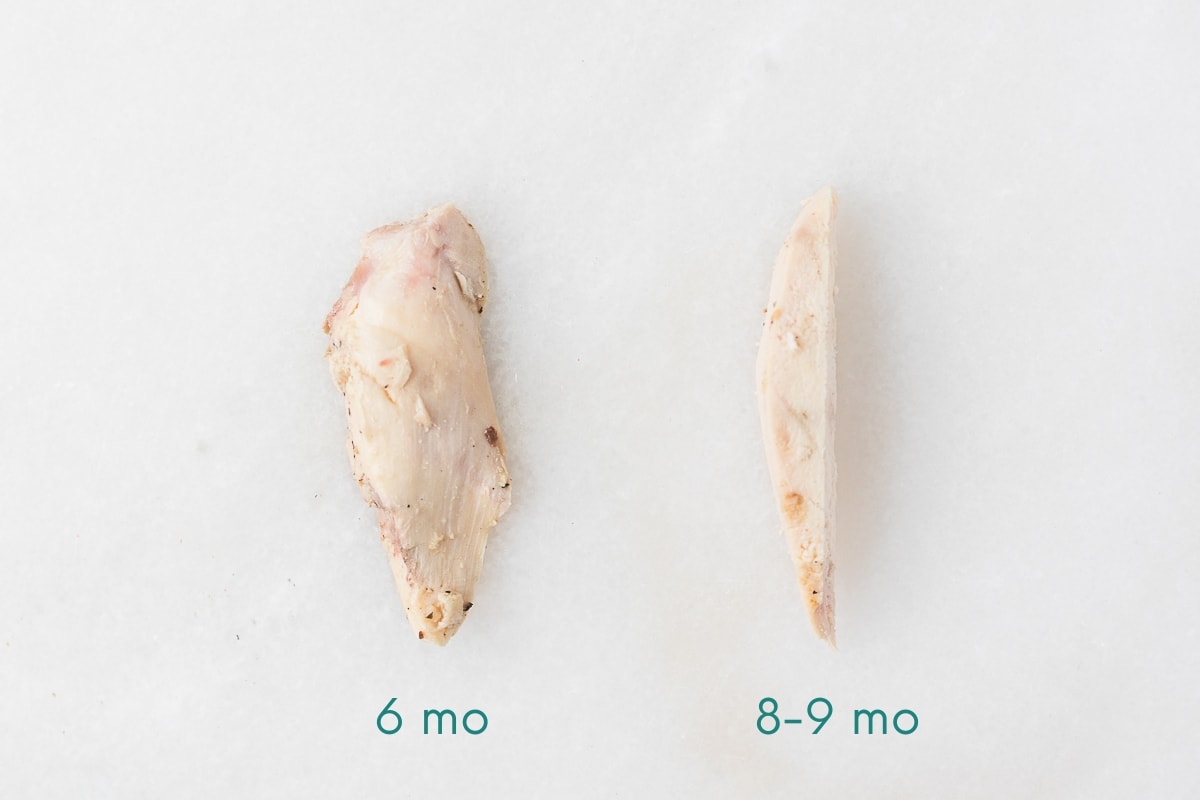
2. One or two finger-width strips (6+ months)
Around 6 months, you can offer strips of chicken about the length and width of two adult fingers for baby to scoop up in his fist and gum. Even if he cannot chew any of the meat, it is good practice for his mouth muscles, and he will suck the iron-rich juices out. As baby gets better with biting and mashing around 8-9 months, you can offer thinner strips, about the width of your pinky finger.
If strips are not possible, such as in mixed dishes, finely chop the chicken (smaller than shreds).
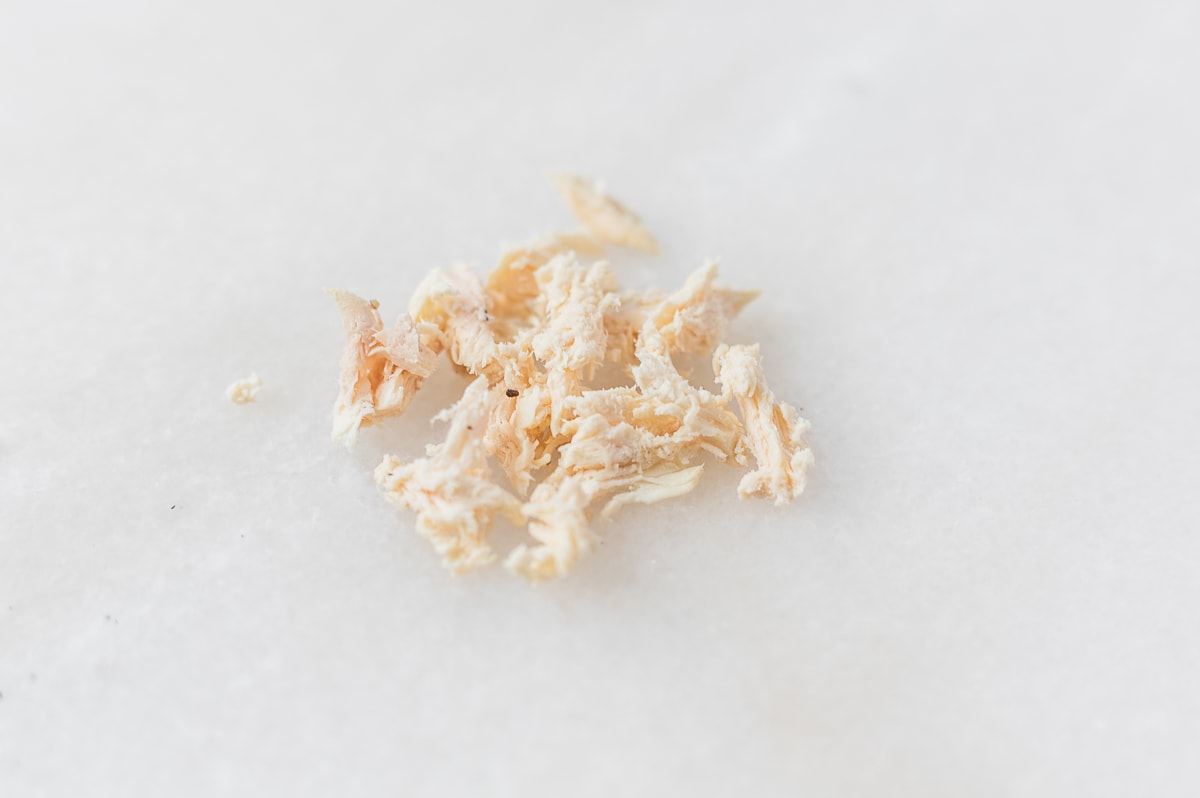
3. Shredded (9+ months)
Once baby develops a pincer grasp, you can offer shredded or finely chopped chicken for baby to pick up between his index finger and thumb. Continue to avoid larger bite-sized cubes to reduce the risk of choking.
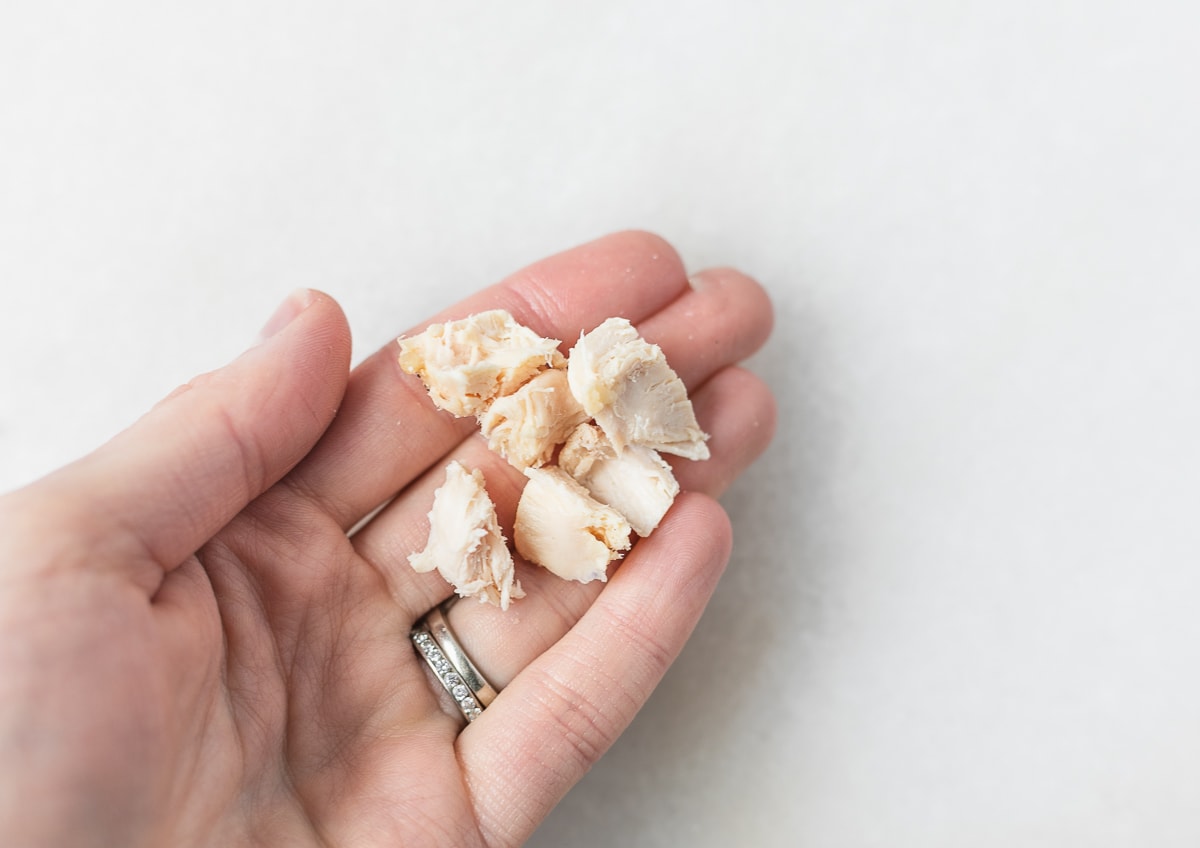
4. Bite-size pieces (12+ months)
Around 12 months, or once eating skills have advanced (your child can control biting and chewing, doesn't overstuff his mouth) you can start to offer bite-sized pieces, about the size of you fingernail. Try not to make them perfectly square to reduce risk of choking. You can also offer utensils for practice.
If you prefer, you can also continue to offer any of the above methods.
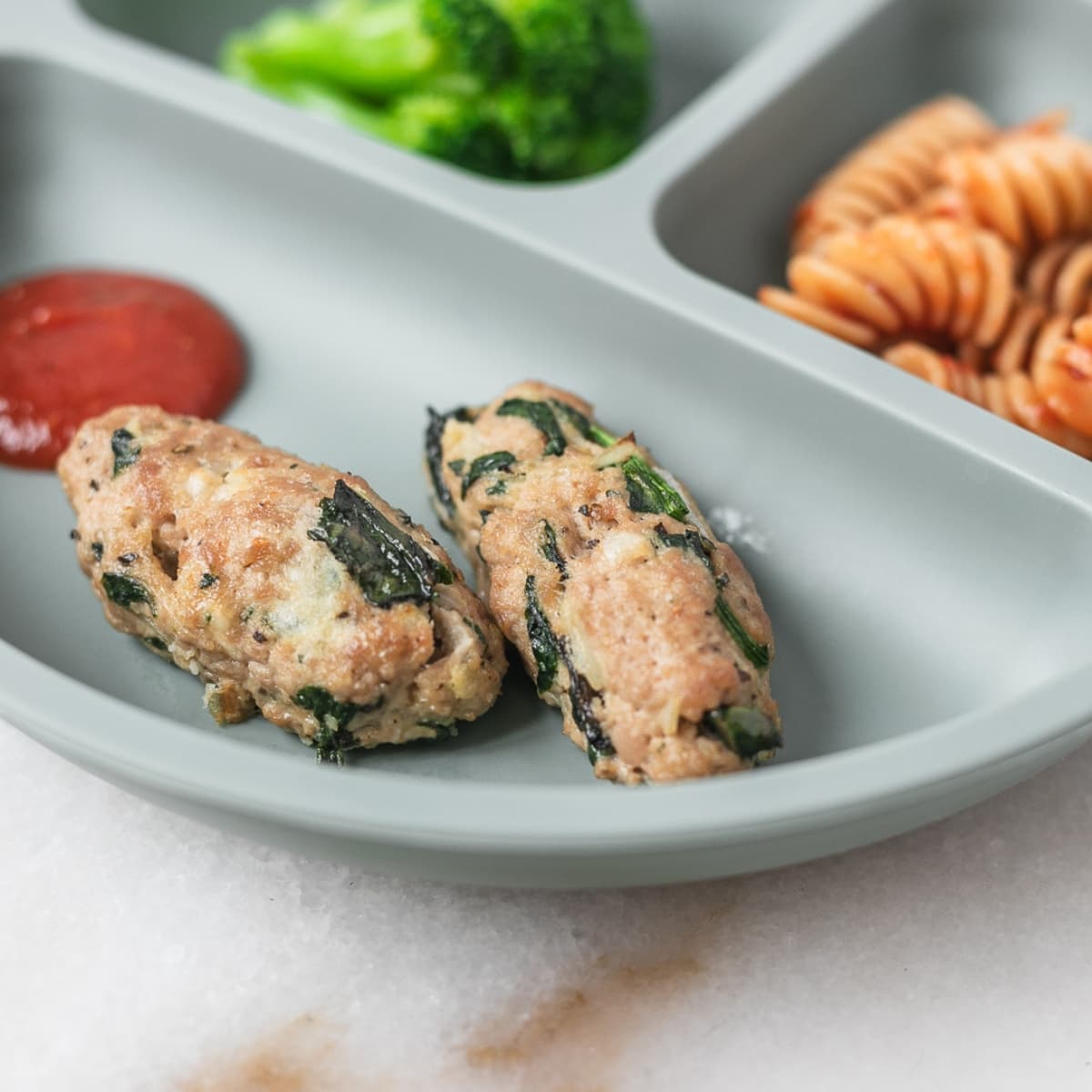
5. Ground Chicken or in Mixed Dishes (varies)
You can serve ground chicken in meatball 'fingers' (try using it in place of turkey in these spinach feta meatballs!) or other recipes in an age appropriate form, as well as chicken in mixed dishes. Just make sure the texture and shape are appropriate. In mixed dishes, shred or finely chop the chicken for younger eaters as outlined above, either before adding to the dish or before serving to baby.
BLW Friendly Chicken Recipes
- Poached Chicken Breast by Bowl of Delicious (optionally, omit or reduce the salt)
- Easy Roast Chicken by Tastes Better From Scratch
- Chicken Carrot Meatballs by Baby Foode (shape into 'fingers' like I do here.)
- Orange Sesame Chicken with Vegetbles by MJ and Hungryman
- Chicken and Leek Baked Risotto by My Kids Lick The Bowl
- Kid Friendly Chicken Curry by Mas and Pas
- Creamy Mushroom Chicken Pasta by Feeding Tiny Bellies
- Yogurt Marinated Greek Chicken by Feel Good Foodie (omit or reduce the salt)
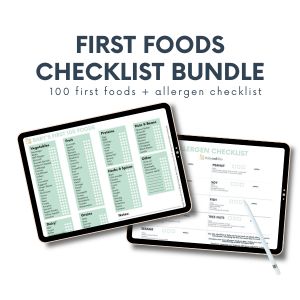
Track your baby's journey through starting solids! Get my 100 First Foods Checklist and Allergen Checklist Bundle today!
FAQ
Yes, chicken can be a choking hazard. To minimize risk, avoid cutting chicken into cubes or large chunks, and avoid serving dry chicken. Also be sure to remove any skin. Follow the serving guidelines above, and always supervise baby closely at meals.
No, chicken is not a common allergen. It has been reported as a trigger for FPIES, or Food Protein-Induced Enterocolitis Syndrome.
Yes! Have you ever had your finger chomped on by a baby with no teeth? Babies' gums are surprisingly strong! Just be sure chicken is moist and juicy, and that you are serving in a safe manner as outlined above.
Chicken nuggets are often highly processed and high in sodium. Due to that, and the fact that they are coated in a crunchy texture and often not the best shape for babies, I recommend waiting until at least 12 months. Also, let me gently remind you that one of the main points of baby led weaning is that we are training baby to eat what the family eats, not separate 'kid' food. So when you do introduce chicken nuggets, I'd recommend giving them infrequently.
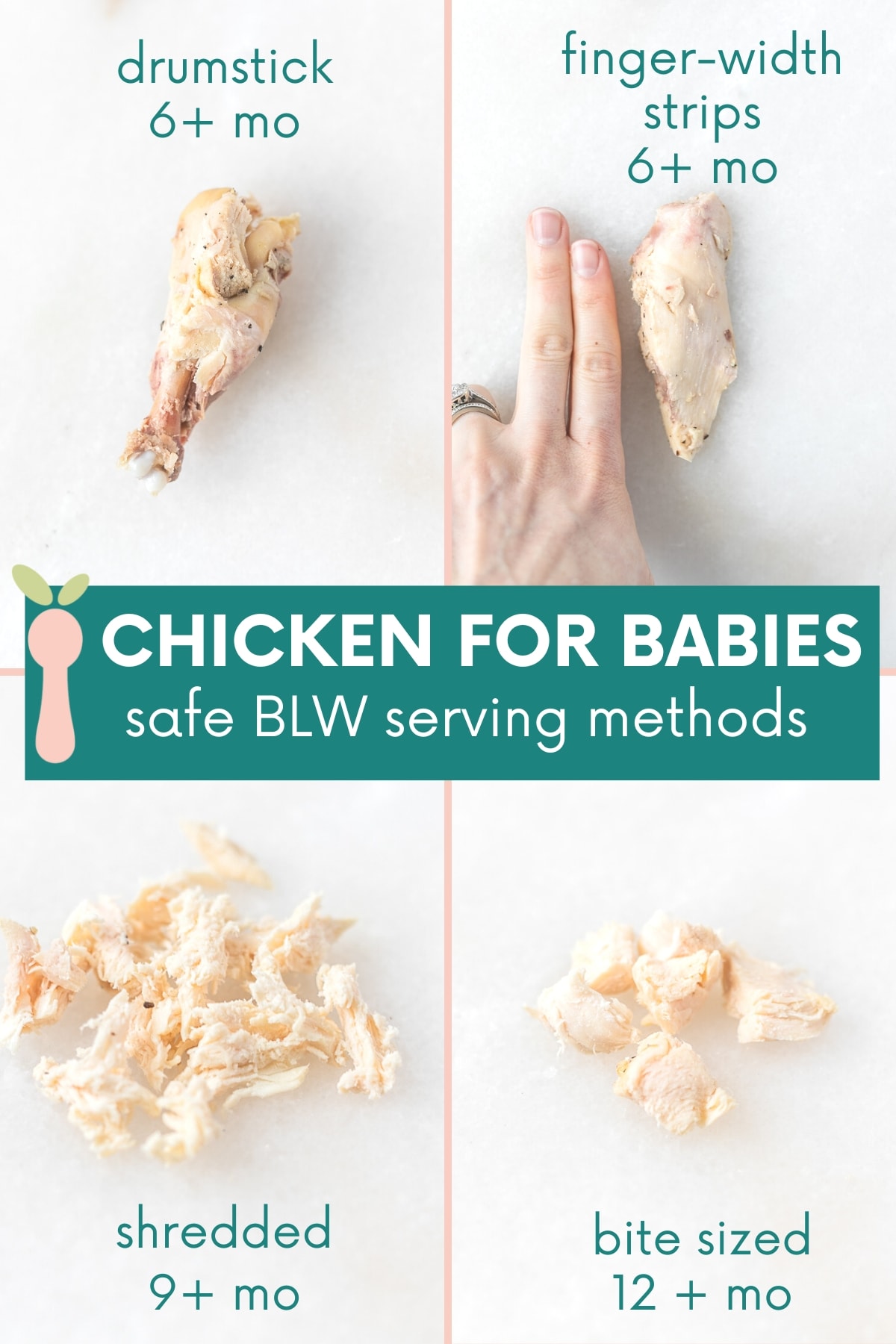
Resources





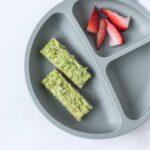







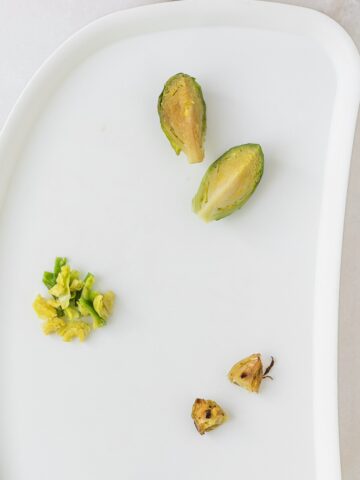
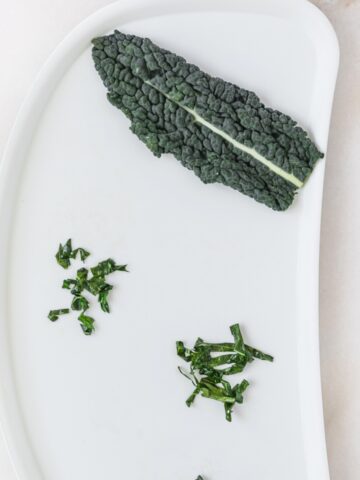
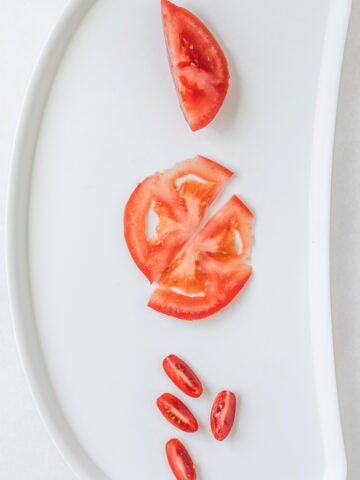
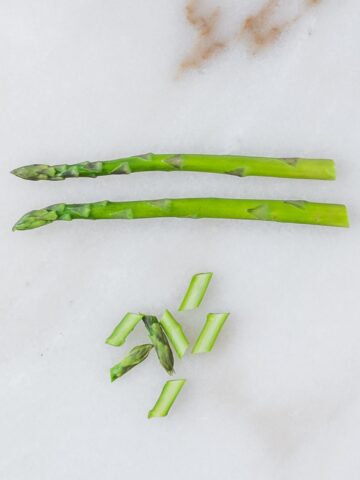
Leave a Reply